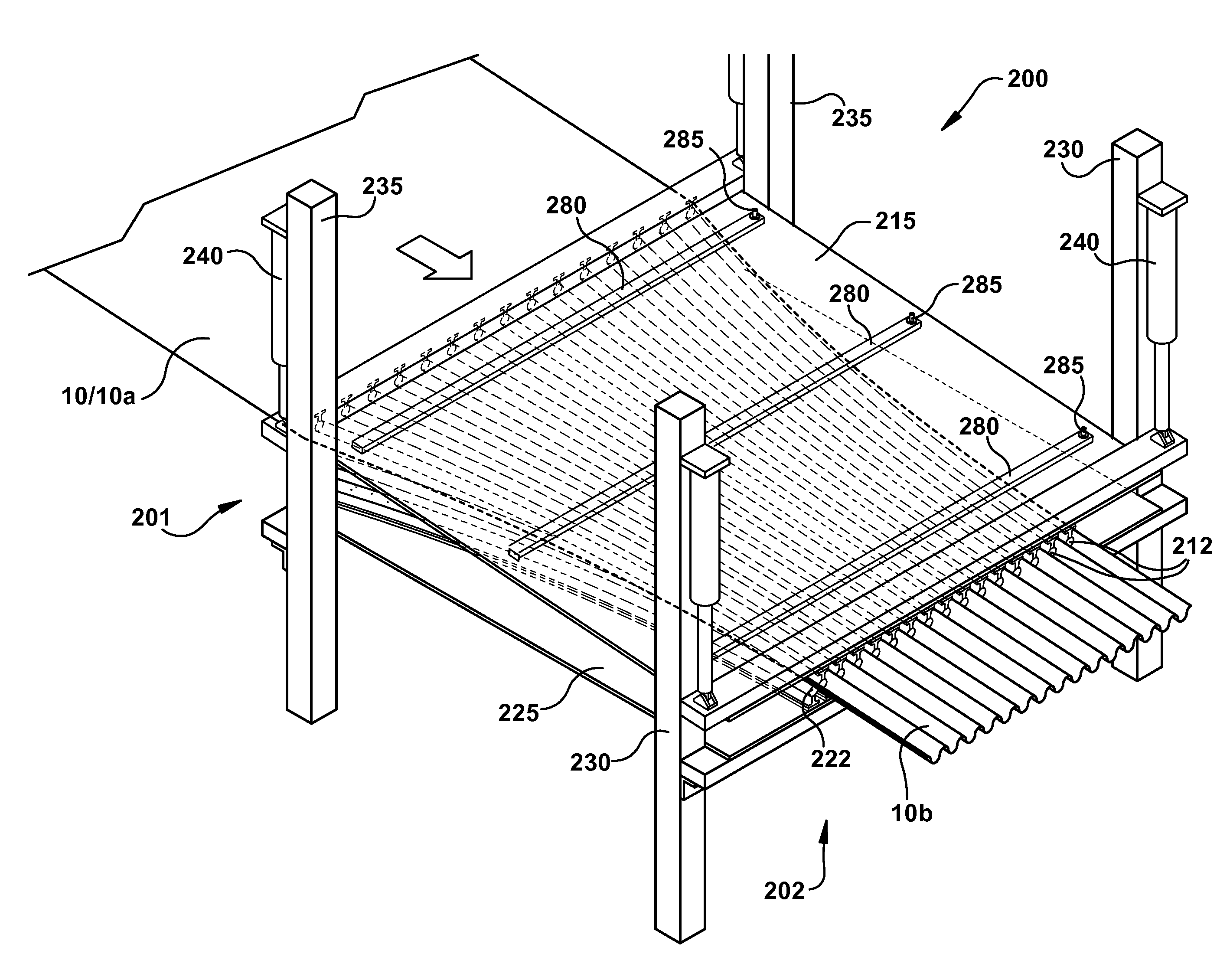Method and apparatus for fluting a web in the machine direction
a web and machine direction technology, applied in the field of methods and apparatus for fluting a web in the machine direction, can solve the problems of corrugating a web, structural damage in the web, damage to paperboard or other web materials, etc., and achieve the effect of reducing the width of the web
- Summary
- Abstract
- Description
- Claims
- Application Information
AI Technical Summary
Benefits of technology
Problems solved by technology
Method used
Image
Examples
Embodiment Construction
[0034]FIG. 1 schematically illustrates a longitudinal corrugating line 1000. In the illustrated embodiment the corrugating line 1000 includes, in the machine direction along the web-travel pathway of a web 10 of corrugating medium, a preconditioning apparatus 100, a forming device 200, a corrugating die 300 and a final corrugating apparatus 400. In FIG. 1, a single web 10 of corrugating medium is traveling along the web-travel pathway through the corrugating line 1000 in the machine direction. The web is denoted by reference numerals 10, 10a, 10b, 10c and 10d in FIG. 1, corresponding to different stages in the line 1000 wherein the web has been conditioned or treated or manipulated in different operations as more fully described below.
[0035]Briefly, in FIG. 1 the web 10 is initially fed from a source of corrugating medium (e.g. from rolls as is conventional in the art, not shown) to the preconditioning apparatus 100. In the preconditioning apparatus 100, the moisture and / or temperat...
PUM
 Login to View More
Login to View More Abstract
Description
Claims
Application Information
 Login to View More
Login to View More - R&D
- Intellectual Property
- Life Sciences
- Materials
- Tech Scout
- Unparalleled Data Quality
- Higher Quality Content
- 60% Fewer Hallucinations
Browse by: Latest US Patents, China's latest patents, Technical Efficacy Thesaurus, Application Domain, Technology Topic, Popular Technical Reports.
© 2025 PatSnap. All rights reserved.Legal|Privacy policy|Modern Slavery Act Transparency Statement|Sitemap|About US| Contact US: help@patsnap.com



